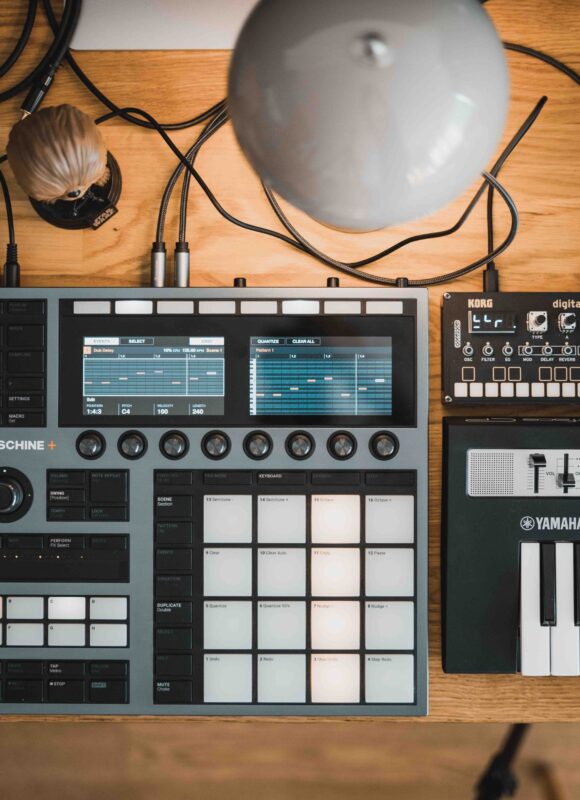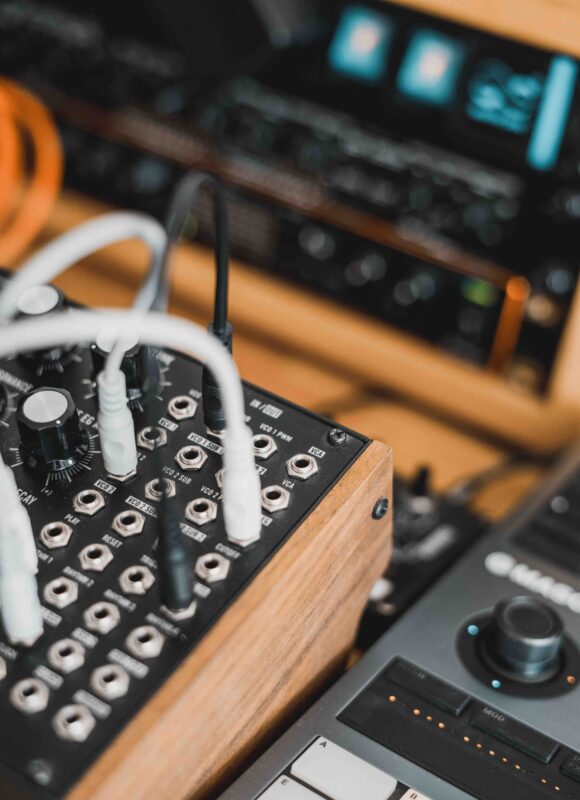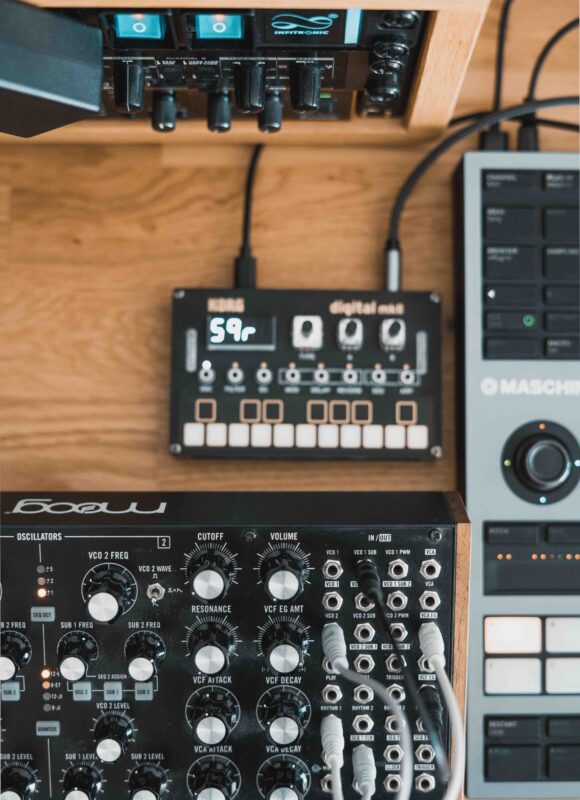[ad_1]
Electronic producers often lean on visual cues – grids, meters, and waveforms – when working in a DAW. But for veteran artist Martin Roth, removing the screen from the equation has become essential to staying creatively grounded.
Moving toward a DAWless workflow with tools like Maschine+ has helped him reconnect with the tactile side of making music, where instinct and physical interaction matter more than polish or speed.
Martin’s approach reflects a broader shift among experienced producers: doing less on-screen, and more by ear. With his Moving On EP set to release on Anjunadeep May 27 – including the long-awaited title track “The Song That Plays At The End Of Your Childhood” – and a string of analog-themed projects coming through his own Analog People imprint, the timing lines up well to explore how Maschine+ fits into his evolving process.
In this interview, Martin shares how DAWless production helps him avoid creative burnout, why staying hands-on leads to better results, and what it means to bring childhood curiosity back into modern studio work.
Jump to these sections:
- How going DAWless changes your creative mindset
- Why tactile control with Maschine+ helps you focus
- Balancing hardware workflows with release timelines
- Arranging without a DAW and committing to ideas early
- Lessons from early creative risks that still apply
- Simplifying your setup without limiting creativity
Before we get into the conversation, download two Maschine freebies that Martin created; one arp sound pack that you can hear in the Instagram video below, and one Maschine kit from his track “Synth City.”
Download Maschine sound pack free
Want to learn more? Take a look at Martin’s notes for the freebies.
Do you think going DAWless forces you to think differently about music? If so, how?
The most important part of creating music is to be still psyched and amazed – like my childhood days, in front of the piano and as a teenager playing with my first analog gear. This isn’t easy, as I have been doing this for quite some time already. Techniques, styles, approaches and audiences have changed several times and naturally, things are becoming routine. This can kill the artistic approach and I run the risk of stumbling into established patterns.
I try to stay excited by reminding myself how everything started. I envision myself as a guest in my own youth: innocent, everything is allowed, not overthinking. There are simply no rules. AND the computer screen and mouse are not dominant. The main craft is touching knobs and keys.
When I do this, the focus is more on the ears and less on the eyes.
And it must be simple. I hate it when results take too long to achieve. Fortunately, simplicity is better in every way: it’s easier to mix, handle, and process, both for the listener and the technical creator as well.
DAWless equals portability. I’m more likely to pick up an instrument that’s ready to go and can be used anywhere I feel comfortable. No cables should be tethering me to an AC outlet or monitor system. A laptop powerbank and a 15V UBC-C power converter will do the trick here.
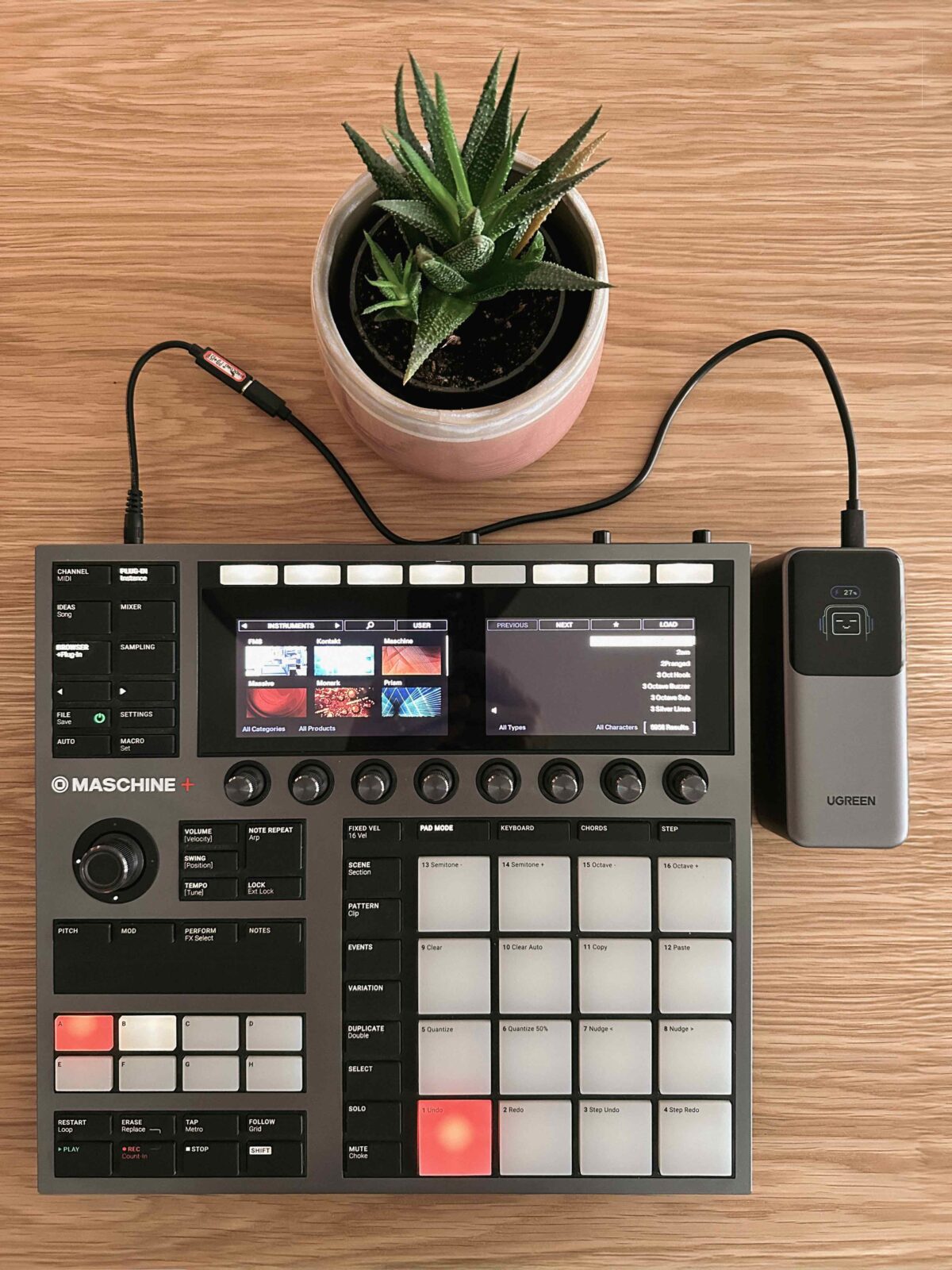
Devices like Maschine offer a lot of tactile control – do you think having that hands-on element helps you stay more focused compared to working entirely in a DAW?
I love my DAW. I know it is still better inside out compared to all the external boxes and keyboards I have – I can rush through several processes like mixing and sometimes sound design.
But when it comes to the general idea of the track and even sometimes the arrangement, it has to happen in the playground or “sandbox” like Maschine+. You get a more honest and heartfelt result with hands on control.
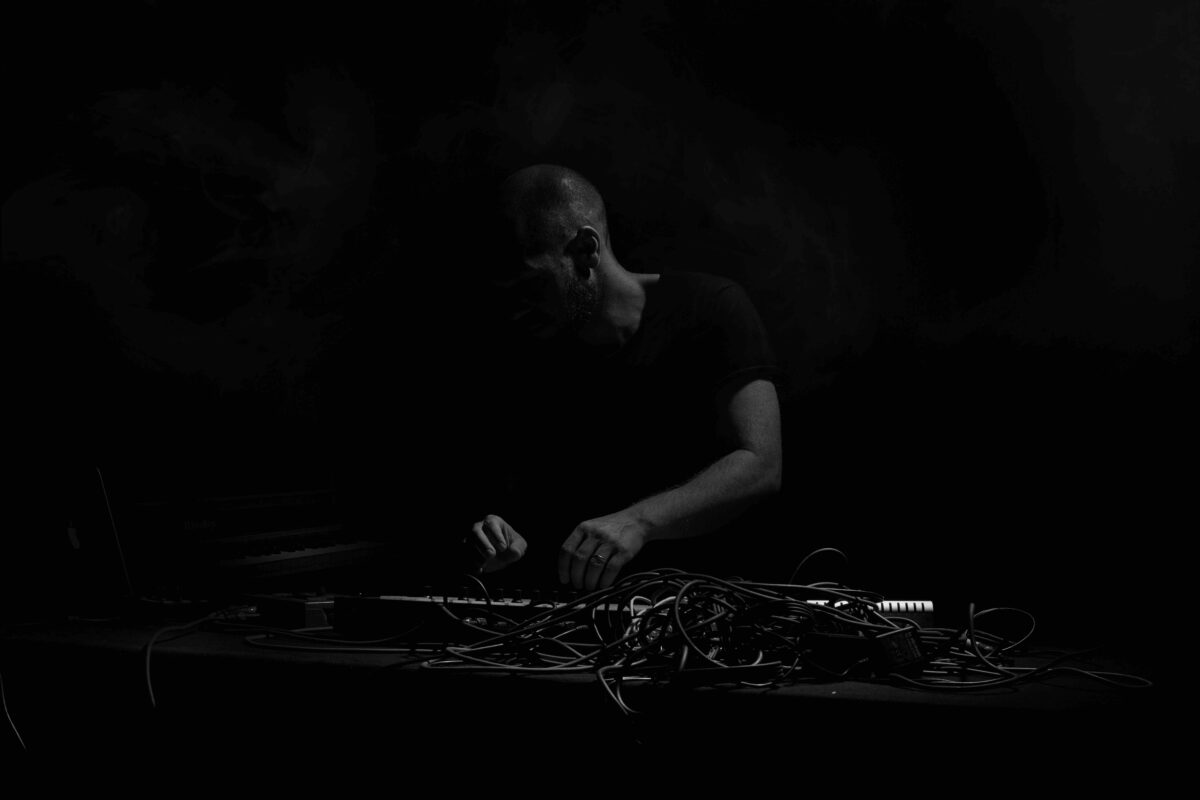
With the industry’s emphasis on fast output, do you think hardware workflows help or hinder staying on schedule?
The internal Maschine+ instruments and plugins provide a solid foundation for fast output, covering mono/poly synthesis, FM synthesis, wavetable synthesis, and drum synths.
If you don’t want to wait for additional VSTs to be implemented, you can explore the vast selection of Reaktor ensembles in Maschine+.
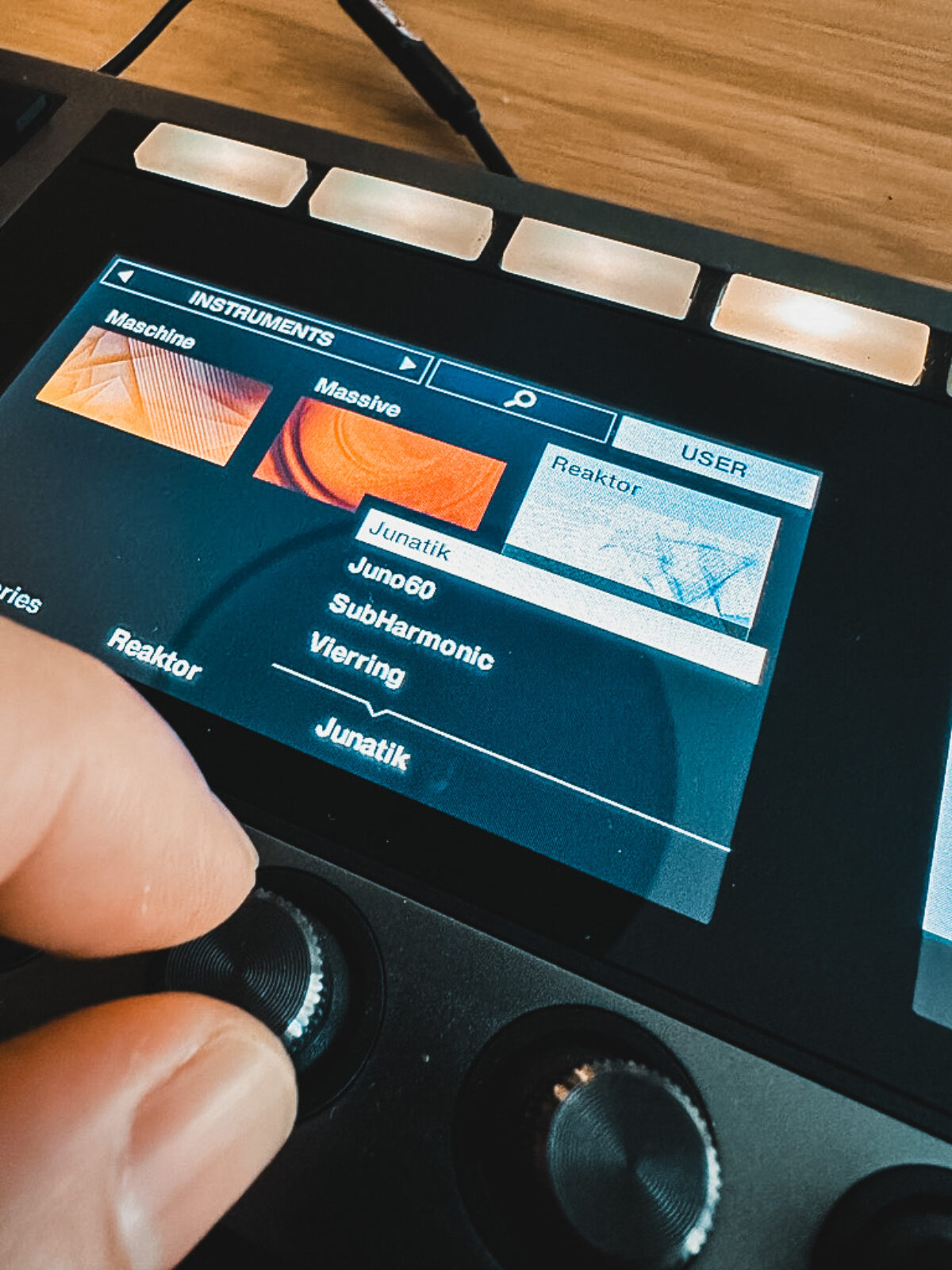
Simply select your favorite ensemble, open it in Reaktor on your Mac or PC, pick any preset at random, save the ensemble (.ens) again, and place it in the Native Instruments / User / Reaktor folder on your Maschine+ SD card.
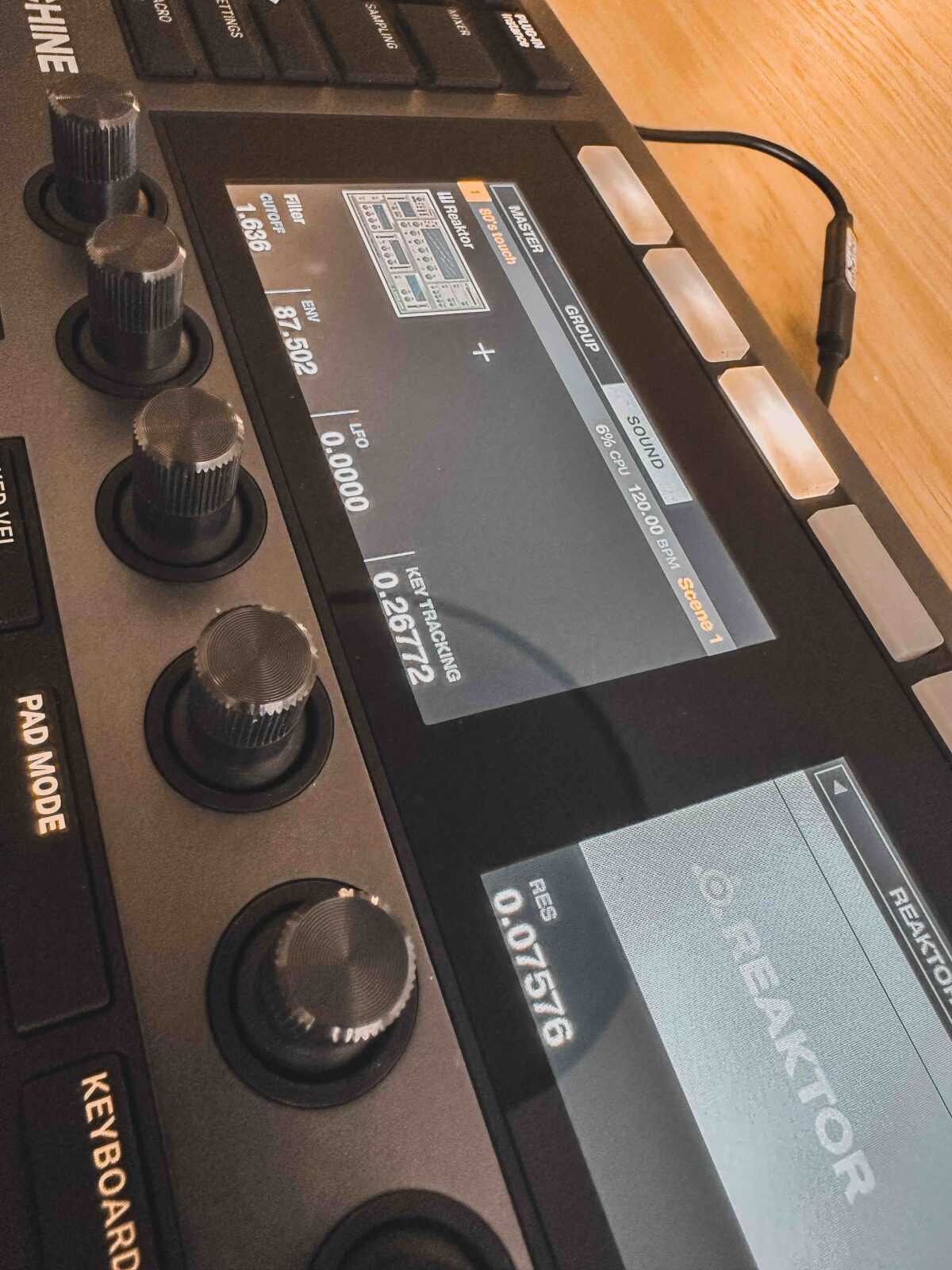
You can then access all your favorite ensembles and all of their corresponding presets directly, and they even load faster than on your desktop.
In regards to the industry’s emphasis on fast output: even though I function under pressure and have written some of my best pieces in just hours rather than weeks, sometimes I don’t like it. Things take time to develop – or better – to incubate.
Just by sitting on the HD – once the time is right you know.
How do you approach layering sounds or creating arrangements in a DAWless environment with tools like Maschine?
I frequently set up my Maschine as a main DAWless hub, it’s quite easy. Many small external units and synths only need a USB connection to the Maschine+ for power, MIDI, and even audio. You can then select their MIDI inputs and outputs directly in the settings and start playing right away in an empty Group/Sound – even routing them through internal effects if desired.
As you can see above, If you need additional audio inputs or outputs, you can easily expand your setup with a USB audio interface – my choice is the Focusrite Scarlett 18i20.
Honestly, I am so well versed in arranging my music in a DAW that I am tempted to do it there – however, I am continuing to learn it the classic way, which is without the DAW. I’m still arranging a song by how it sounds and not how it looks good in boxes and in a grid.
With a DAW, there’s also the risk of trying to add non-essential things before you are committed to the arrangement, which doesn’t happen as much when you’re in a DAWless setup.
With all that being said, I recommend arranging a song as early as possible. Fortunately, Ableton Live gives you the possibility to do it in a “classic way” in that it lets you mute and unmute parts while playing with automation. This is helpful when you’re trying to figure out how song structure works on a specific part.
My current setup is arranging it as far as you can in a DAWless setup, committing to the parts by printing them into WAV files and then doing the final mixing and arranging steps in a DAW.
What’s a mistake you’ve made early in your career that taught you a lot about balancing creative risks and industry demands?
In the early days, I was much more of a risk taker. The music I created when I was younger was not as polished, but at the same time, it was more special. My first ever record was the worst-sounding record on the label at that time, but it became successful because the vibe was right.
Fast forward to now, we intentionally add errors, flaws, and noise on purpose so that it sounds more realistic, unique, and human.
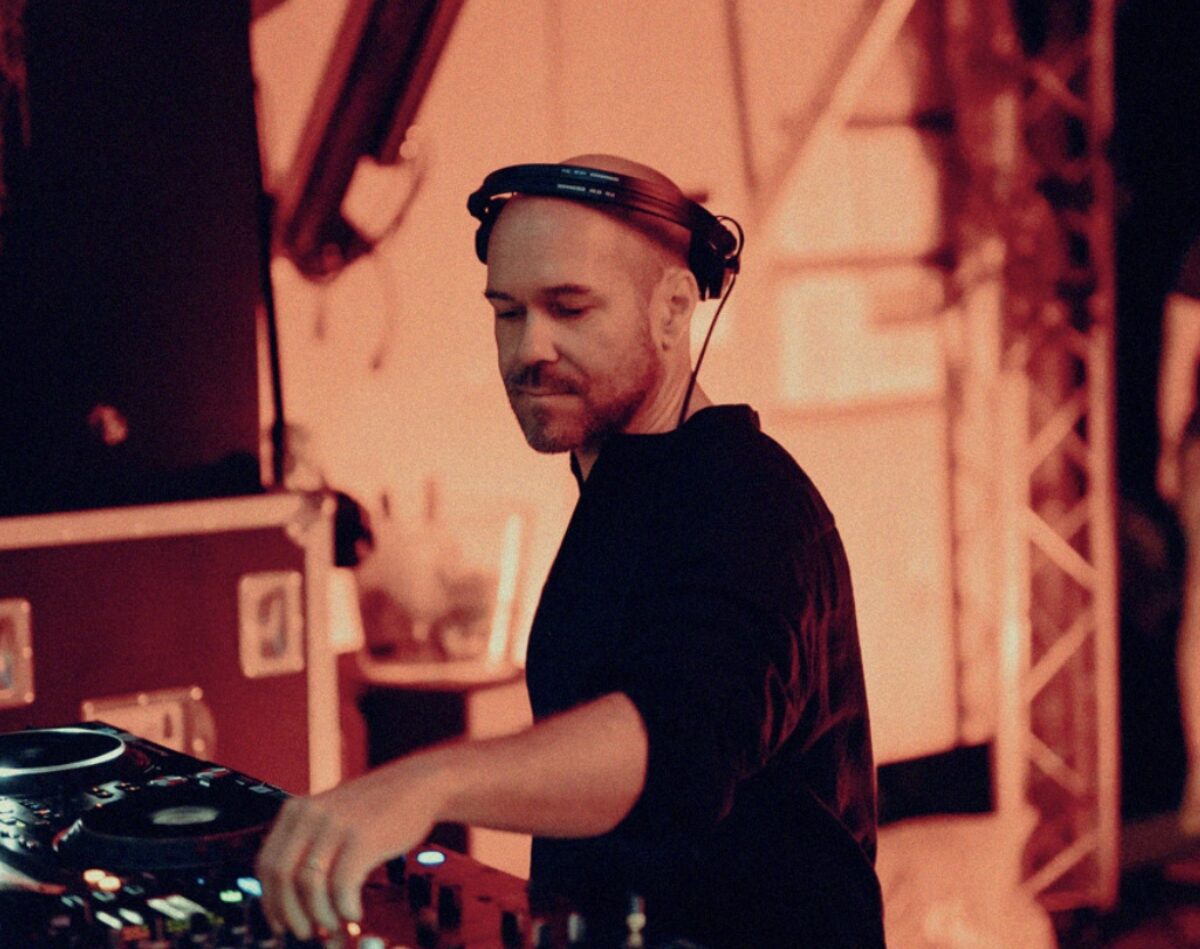
For producers feeling overwhelmed by tools and options, what’s your advice on focusing their setup without limiting their creativity?
Less is always more.
While there are plenty of options to build, shape and generate a sound through many plugins, limiting yourself is always beneficial. I need to remind myself of that every day.
When I had my first synth and my first sampler, I knew these tools inside and out. I knew every parameter hidden deep in menus, and I learned tricks to circumvent any limitations.
I feel the same way about Maschine+. There are so many things on my wishlist for Native Instruments to develop, but we can’t just wait for all those updates to come. It’s important to be good at what’s already there and pushing its boundaries.
Start producing in a DAWless environment with Maschine
Big thanks to Martin for pulling back the curtain on how he’s using Maschine+ to stay creatively sharp. It’s easy to get stuck staring at a screen, chasing polish instead of ideas – but stepping away from the DAW, even for a while, can shift your whole mindset.
That’s what came through the most in this convo: working with hardware isn’t about nostalgia or purism – it’s about staying excited to make music. Keeping things tactile, keeping them a little messy, and not overthinking every step. Maschine gives Martin that kind of playground, and it’s clear it’s helping him tap into something more instinctive.
With new music dropping soon and a bigger analog-focused push on the horizon, he’s laying out a pretty convincing case for why sometimes, less really does get you further.
Notes from Martin about the free sounds and kit
Free sound pack: Anyone with Maschine+ or the Maschine Controller can play it right away with the Chords and Arp Sequence already selected – all the others with other Maschine versions or just the software can at least play the sound and make their own progressions.
Free Maschine kit: I made a Kit from my track “Synth City” and ported the most important parts of the song into Maschine software so you have all the chords, the polysix sampled bassline, the sequence and of course the drum sounds from the song. This is also attached as a full Maschine 2 Project incl. samples.
The post Martin Roth on going DAWless: “Touching knobs and keys is the main craft” first appeared on Native Instruments Blog.
[ad_2]
Source link

